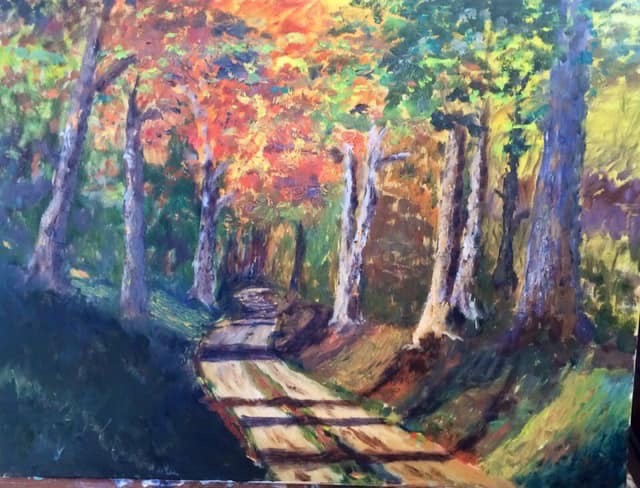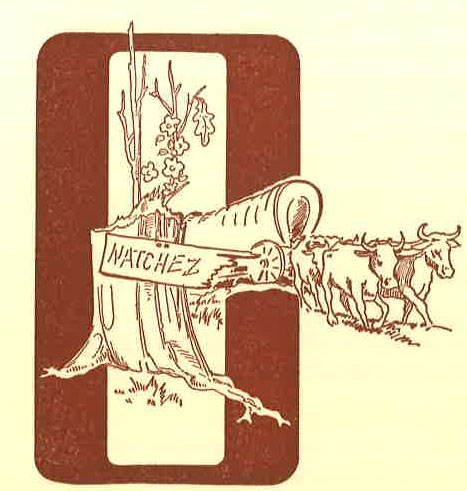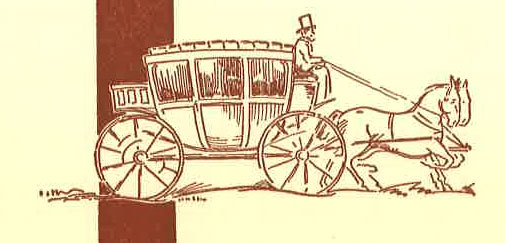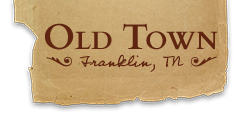The Natchez Trace: A Thoroughfare of History
It’s been an animal trail for tens of thousands of years, an ancient Indian trail for a prehistoric culture that created the region’s first structured villages, a wilderness road that opened the entire southwest from present day Nashville to Natchez, Mississippi, the commercial road that provided return passage for those delivering their goods to the terminus of the great Mississippi River. And for the last thousand years it has brought villagers, friends and family to Old Town. As it does today, and as it will in the future.

Painting by Nick Fielder
Present day Nashville was the site of a mighty salt lick, called the French Lick by the early settlers. For thousands of years this lick was the attraction for large animal herds, in particular bison. The regular migration of these animals created well defined trail beds, which were later followed by prehistoric native peoples (the Mississippians) and then native Americans Indians, and later the early settlers and pioneers. The large concentration of bison attracted the earlier peoples and, combined with the high ground, fertile fields, and abundance of water, encouraged settling in the region we know today as Old Town.

One trail in particular over time dominated all others. In early days it was called both the Natchez Trail and the Chickasaw Trail. It began in the region of present-day Nashville and continued southwest to lower Mississippi.
The Natchez Trace “Road” — or sometimes called the “Government Road” because it was substantially upgraded by the military in 1801-1802 — that rolls through Old Town today is a northern division or parallel arm of the thoroughfare of the original “Trace,” with the two arms coming back together as one a few miles south of today’s Nashville. This can be confusing, so we refer to the original, ancient and wilderness road that runs through Old Town and across the Old Town Bridge (you can readily see the old well-travelled roadbed just in front of the bridge) alternately as the Harpeth Branch of the Natchez Trace, the Government Road, the Old Natchez Trace, or the Natchez Trace “Road.”
In 1800 the U.S. Congress passed legislation to establish a major post road between Nashville and Natchez. The existing road, the primitive Natchez Trace, was not maintained and difficult to travel, crossing creeks and rivers. Following a treaty on October 24, 1801 with first the Chickasaw Indians and then a few weeks later the Choctaws, substantial road improvements and construction of dry stacked stone bridges began and were completed in 1802. Thus the name, “The Government Road,” which linked Nashville on the north with the original Trace on the south just after the Road crossed over Garrison Fork.
For orientation for today’s observer, the original Natchez Trace trail left present day downtown Nashville, roughly coursing along the route of West End Avenue passing a frequent stopping point Cockrill Spring (today’s Centennial Park) and on through the grounds of the Belle Meade Mansion past Dunham’s Spring, to Pasquo in Bellevue, then along Backbone Ridge southwest toward the Duck River watershed then on its way for another 400 miles to present day Natchez, Mississippi.
The section known as the Government Road begins at Cunningham’s Bridge which crosses Garrison’s Creek (a tributary of Leiper’s Fork). From here, going toward Nashville, the route follows Hillsboro Road to Forest Home and then to along present-day Old Natchez Trace to Sneed Road, and then Vaughn Road to Old Hickory Boulevard.

Andrew Jackson brought his wife Rachel back along the Trace in 1791. And just over twenty years later, on a journey back to Middle Tennessee along the Natchez Trace during the War of 1812 Jackson received his nickname “Old Hickory” because of the tough measures he used in getting his Tennessee soldiers back from Mississippi after having to dismiss them with no pay.)
The Natchez Trace indeed was one of the most historic roads in America. It has a fascinating history and is the setting for many sinister stories of robberies and attacks of those innocent journeymen making their way northward with pockets full of money after unloading their flatboats and wares after their transport down the Mississippi River.
